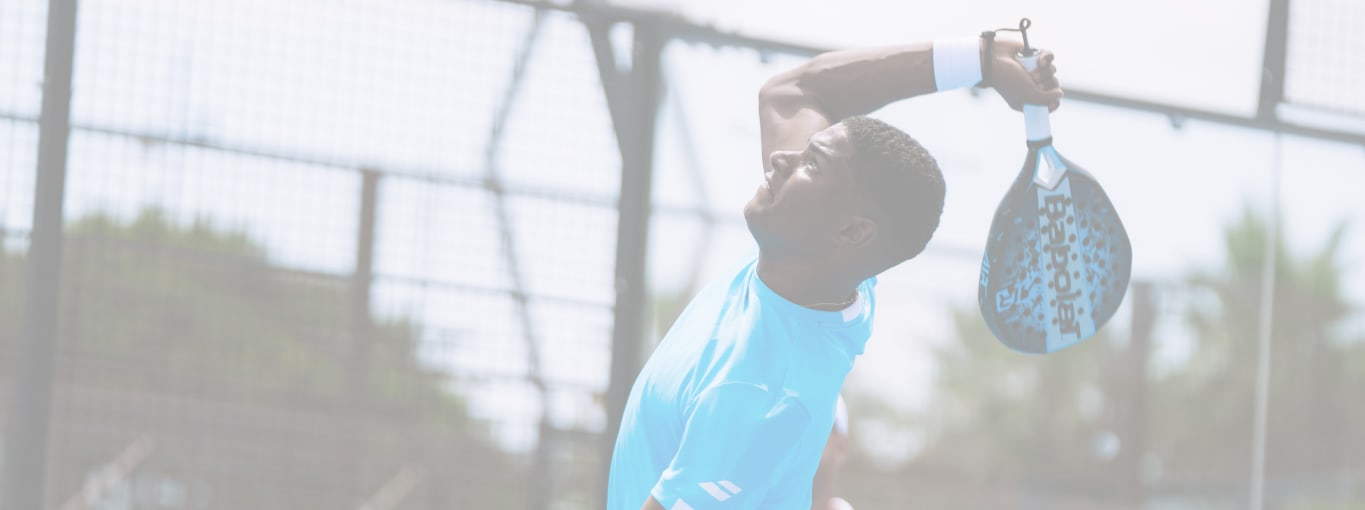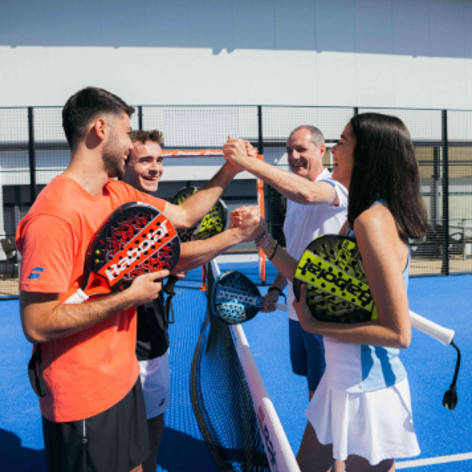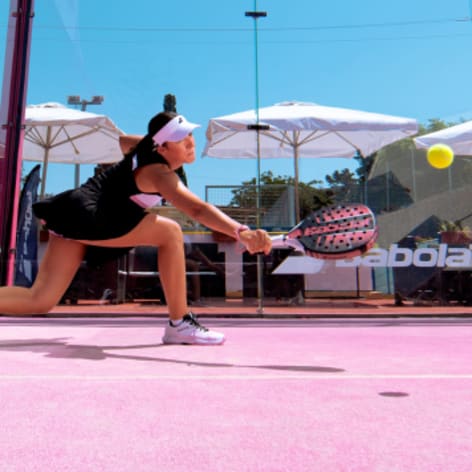Whether you come from tennis or are discovering padel for the first time, this guide takes you step by step through learning the essential shots that will make you a more complete player.
Basic padel techniques for getting started
Before stepping onto the court, it’s essential to understand the technical specifics of padel. Unlike tennis, this sport emphasizes control and precision over raw power. Each player must adapt their playing style to this unique discipline.
The “underhand” serve: first technique to master
The padel serve is radically different from tennis. Performed underhand, it’s the first shot every beginner must learn. To execute a good serve, stand behind the service line, drop the ball, and hit it at hip level. The movement resembles skipping a stone across water.
The main goal is to get the ball into play while preparing to move up to the net. A well-placed serve, near the side glass or in the center, makes things harder for your opponent. Avoid trying to hit hard: a slow but well-directed serve is often more effective in padel.
Court positioning and movement in padel
Your court position largely determines your ability to play well. In doubles, the two players form a team that must move in coordination. The basic position is about two meters from the net, slightly offset to your side of the court. Working with your partner requires constant communication.
Lateral movement dominates in padel. Adopt a bent-knee stance, weight on the balls of your feet. This posture allows you to react quickly in all directions. Keep your racquet in front of you, ready to intercept the ball in the next exchange.
Choosing the right racquet grip for padel
The continental grip, also called the hammer grip, is the recommended basic grip in padel. To use it, imagine shaking someone’s hand: place your hand on the racquet so the V formed by your thumb and index finger aligns with the racquet frame. This grip allows you to easily execute volleys, serves, and shots after the ball rebounds off the walls.
When buying a padel racquet, consider your level and playing style.
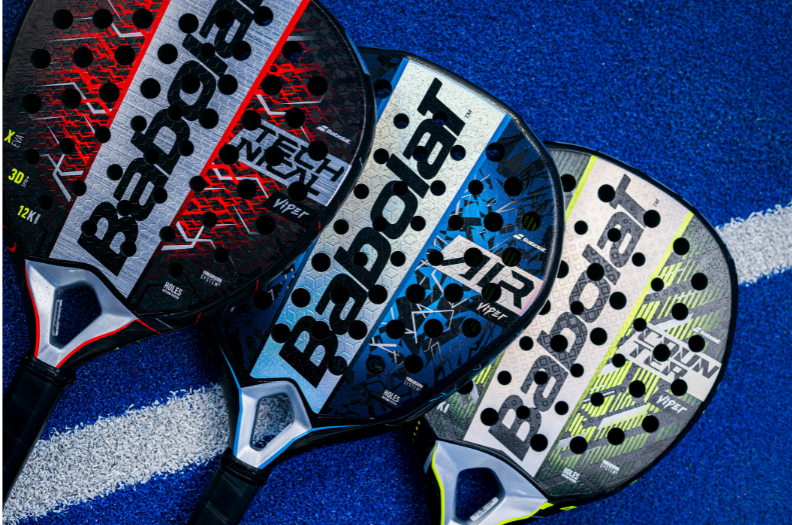
Mastering fundamental padel shots
Mastering the basic shots is the foundation of your progress. Each shot has technical nuances that should be practiced methodically. The more you practice, the more natural these movements become.
Forehand in padel: technique and tips
The padel forehand is usually played lower than in tennis. Prepare by turning your shoulders with the racquet back. The movement starts from the legs, goes through the hips, and finishes with the arm follow-through. Hit the ball in front of you, aiming for a downward trajectory.
Timing and control are key. Unlike tennis, you often need to let the ball drop lower before hitting it. This technique improves control and facilitates long rallies, which are characteristic of padel. Each player develops their own rhythm with practice.
Backhand: differences from tennis and adaptation
The one-handed backhand dominates in padel, even for players used to two-handed backhands in tennis. Preparation is similar to the forehand: shoulder rotation, weight on the back leg, striking slightly in front of the body.
For players prioritizing control over power, the sliced backhand is an excellent option. It slows the game and allows precise placement, especially from the baseline. More control means better positioning.
Discover all Babolat padel racquets.
Volley at the net: key to offensive play
The volley is the most frequent shot in padel. Positioned at the net, you intercept many balls before they bounce. The technique differs from tennis: the movement is shorter and more compact.
Keep your racquet high, elbow slightly away from your body. At impact, guide the ball rather than hitting hard. The goal is to direct it toward your opponent’s feet or angles. Precision always outweighs power at the net.
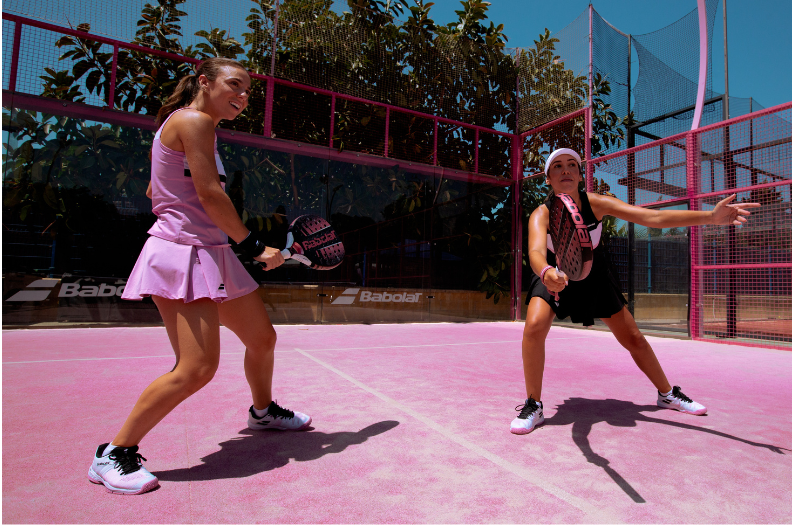
Wall shots: a unique padel element
Using the walls fundamentally distinguishes padel from other racquet sports. Mastering wall shots opens up new tactical possibilities for every player.
Playing after the ball rebounds off the wall: timing and positioning
When the ball rebounds off the back wall, resist the urge to step back. Instead, move toward it and let it come to you. This counter-intuitive technique greatly improves timing. Position yourself sideways to the wall to facilitate shoulder rotation.
The secret is anticipating the trajectory. The more you play, the better you get at reading rebounds. Start with simple balls, then progress to more complex situations with double rebounds (floor then wall, or vice versa).
Smash in padel: power and control
The padel smash requires more finesse than tennis. Three options exist: the flat smash to finish the point, the spin smash to force the ball out after the rebound, and the controlled smash (bandeja) to maintain offensive positioning. Each shot has a different tactical purpose.
For an effective smash, position yourself well under the ball. The movement starts from shoulder rotation, the arm forms a right angle at the elbow. Hit at the highest point, slightly in front of you. A racquet designed for powerful smashes can help, but technique remains key.
The bandeja: padel’s signature shot
The bandeja is one of the most unique padel shots. Half-high volley, half-controlled smash, it maintains pressure while keeping your net position. The motion resembles serving a tray, hence the name.
Executed at head height, the bandeja requires excellent timing. The movement is short, the racquet follows a downward trajectory to impart backspin. The goal: make the ball land in the opponent’s service box, ideally near the side glass. Read the game carefully to choose the right moment.
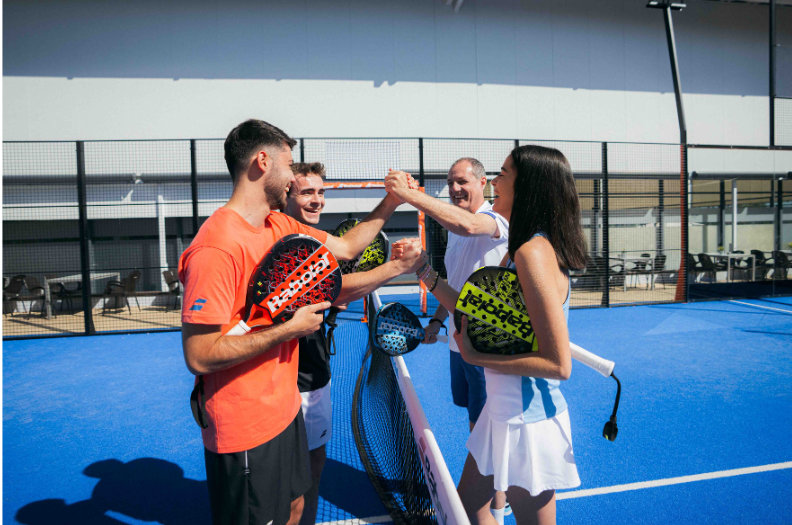
Technical mistakes to avoid in padel
Certain mistakes can significantly slow beginner progress. Identifying them allows quick correction and more effective improvement.
Avoid always going for power: in padel, patience and placement are your best allies. Pay attention to footwork, as solid footing makes every shot easier. Communicate constantly with your partner; silence on a padel court often leads to defeat. Avoid staying too far back. Always try to reach the net after your serve or return. Work on both sides: a weak backhand will be exploited by opponents. Each player must develop a complete, balanced game.
Progress in padel requires regular practice and patience. By learning these fundamental techniques, you will quickly develop a solid and effective game. Remember, padel is above all a social sport where the joy of playing outweighs pure performance. Keep playing regularly, and you will see constant improvement in your shots and overall game.




